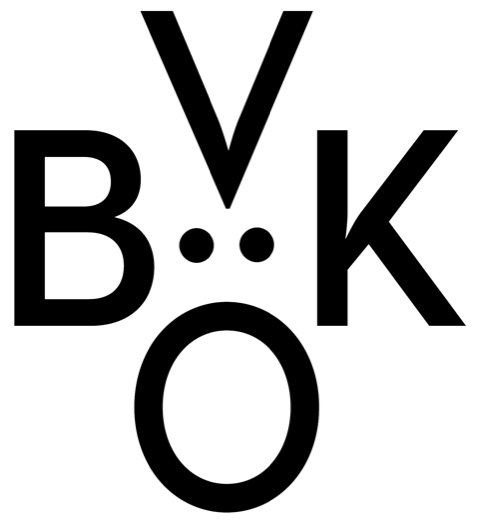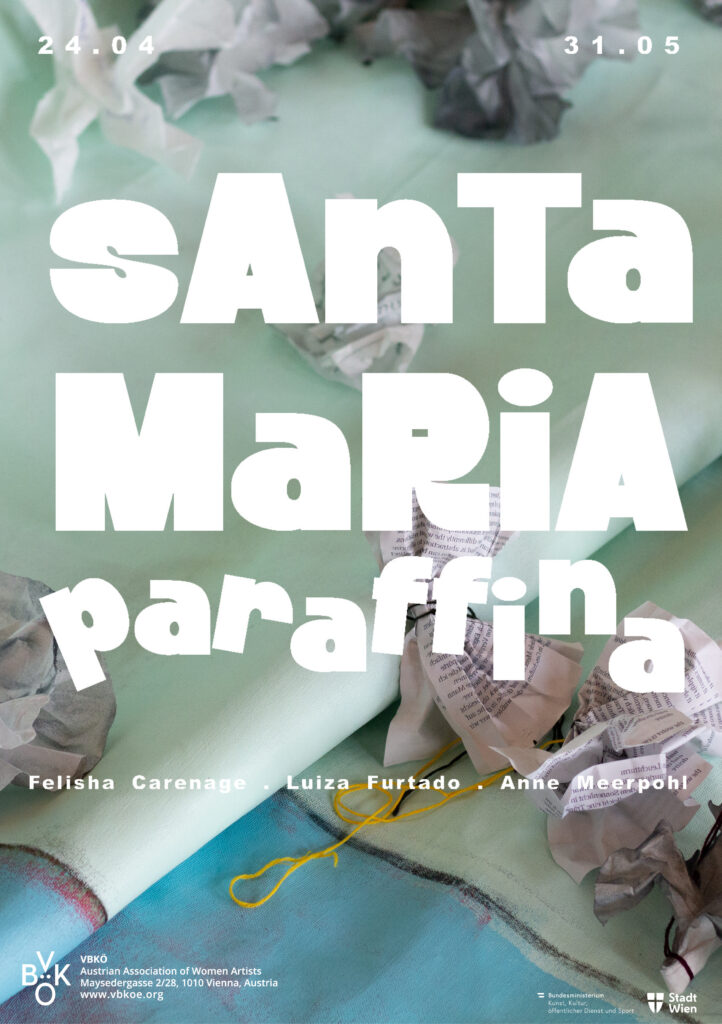Exhibition Duration: 25 April–1 June 2025
Opening hours: Every Friday & Saturday, 2–6pm
Opening: Thursday, 24 April 2025, 7pm
Finissage with performance: Saturday, 31 May 2025, 7pm
Santa Maria Paraffina – myth § trope § glitch
Maria Paraffina’s saltwater body is sold by the seashore as the dockside ghost of an island girl, the passport-thirsty tradwife of a naval officer, a black-framed meme and a bus-stop advert. In a sweaty shop she’s overpaid for her bikini and sarong, her bluecuraçao vomit washes out to the surf where fucks, frolics and is declared dead.
Using this collective alter ego, Felisha Carénage, Luiza Furtado and Anne Meerpohl revel in the absurdly feminine and demonic tropes of womanhood occurring in the seaside spaces into which they were born. Their third iteration of the Maria exhibition finds each of the painters in a typical river-split European city – Hamburg, Vienna, Berlin. For Santa María Paraffina they are navigating their current continent outwards – back to Florianopolis, Eckernförde and San Fernando. Playing with regulations that govern painting, performance and textiles, they muddy their own María iconography, rudely distorting the mirrors of her surface, rowing ripples into rivulets; sputtering liquid futures.
Felisha Carénage uses the rites of installation in the historically loaded VBKÖ space as a (mis)remembering of inherited, créolised spiritual practices. Her wood, paper, fabric and sound works shore up an altar to Santa María Paraffina. To worship María as the wicked and unknowable subaltern, a cartography of Felisha’s grandmother’s riverside devotional garden enshrines this altar. Here, the artist plays a steelband flagwoman’s choreography, lyricises the canvas sails of Columbus’ ships, and appropriates violent literary tropes packed in sultry pop fiction cover art. Can María thus, through these methods of subverting and succumbing to the myth-making required by nation-building, be sanctified?
Water Strings is a series of works by Luiza Furtado, forming between soft sculpture and painting.Using fragments of bed parts, second-hand textiles, and surfboard wax as a binder, the artist creates images resembling an overlapping map of fluids. The work references a fictional encounter between the paths drawn by the Danube’s veins, the local underground hidric* system, and traces of moisture left by rain on architecture. She navigates between natural and urban elements – watering the city – while reflecting on interconnected structures of societal nurturing: the instrumentalization and control of feminized bodies and natural resources. As topics of gender, reproductive politics, and economies of pleasure arise. Heat intensifies in times of ecological urgency, slimming the tensioned threads across these elements.
As a continuation of Part I and Part II of Santa María Paraffina, Anne Meerpohl’s work explores growing up by the sea and the shoreline as a passage or threshold where not only stones, seaweed and shells accumulate but also social spaces of power structures are negotiated. A hybrid of painting and sculpture adapts the form of a blue mussel, which is to be found on countless coasts, including the Baltic Sea, where it appears comparatively in a smaller form with a thinner shell. Therefore, shells symbolize not only a protective covering, a cloak, that holds something inside, but also ideals of beauty, gender constructions and sexualized narratives. The canvas becomes a fragile surface, while the frame liquefies as a tear. An accompanying work as a card game offers a playful extension that connects the painting with textual fragments, referencing the social space of negotiation and communal interactions.
As part of the INDEX festival, for the exhibition’s finissage event on the 31st of May, Felisha, Luiza and Anne present Surge – a performance which activates their painterly installations.
Passages moisten, words flux and poses surface. In a torrential surge between reverb and reverie, the artists conjure, distort, and reclaim Santa Maria Paraffina.
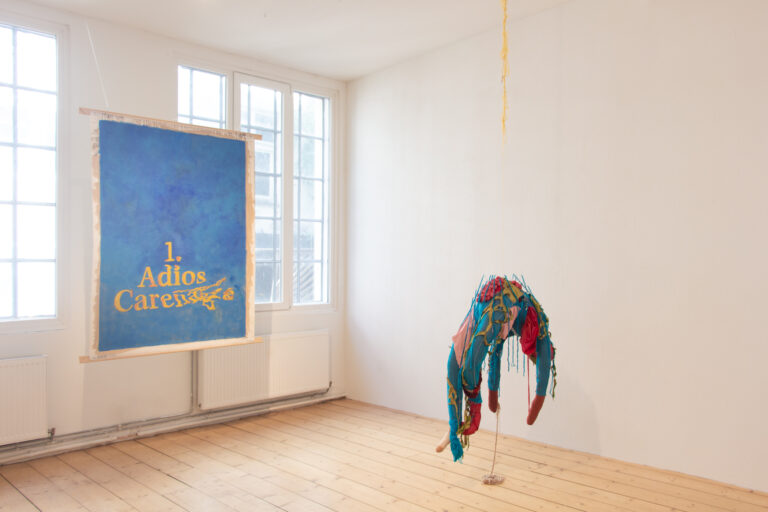
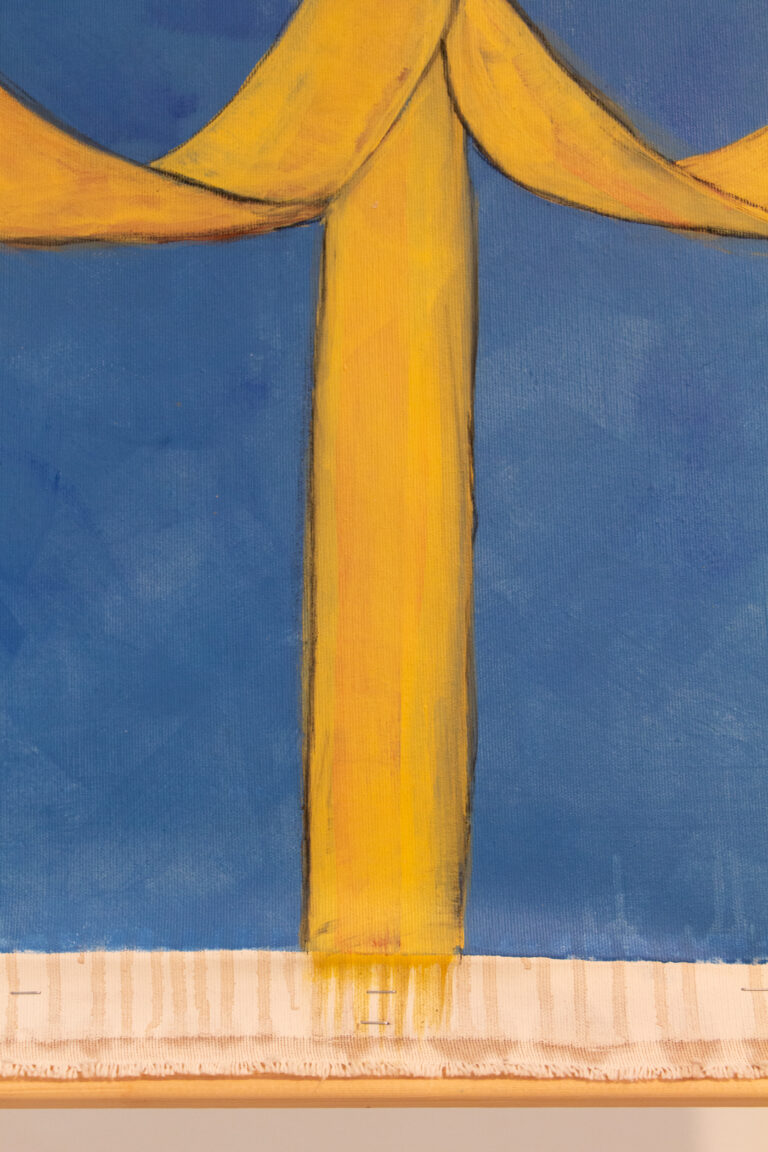
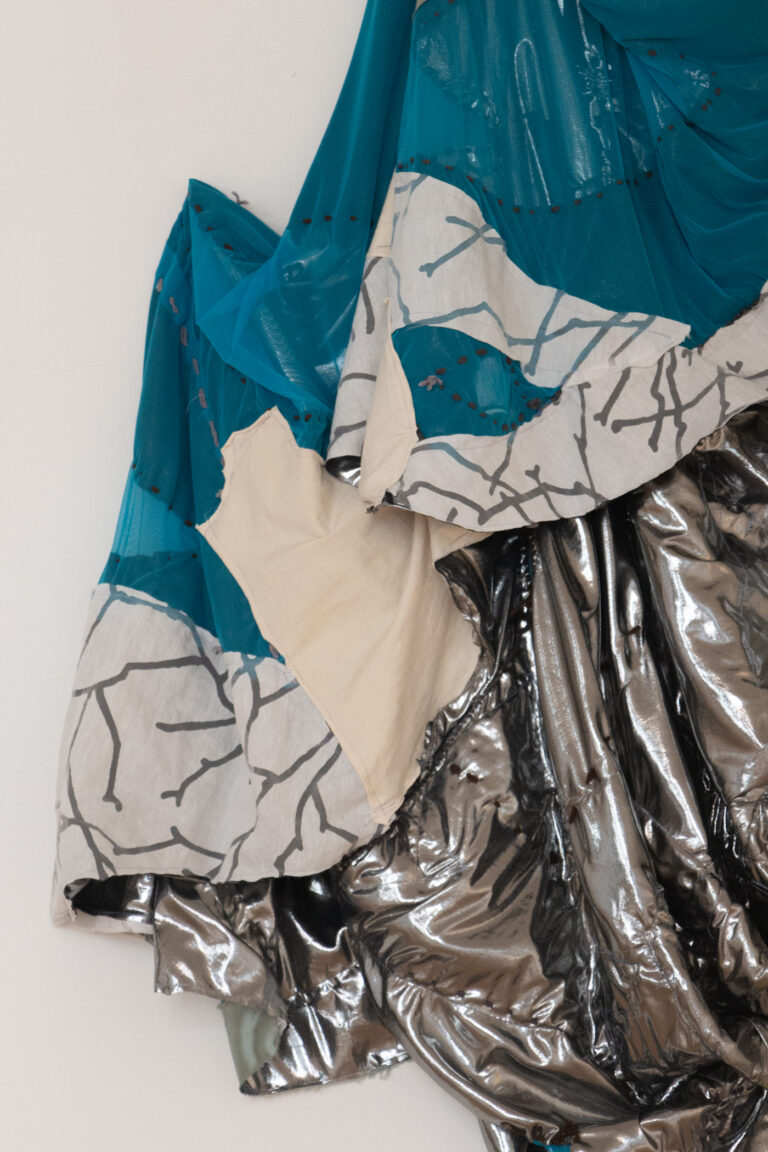
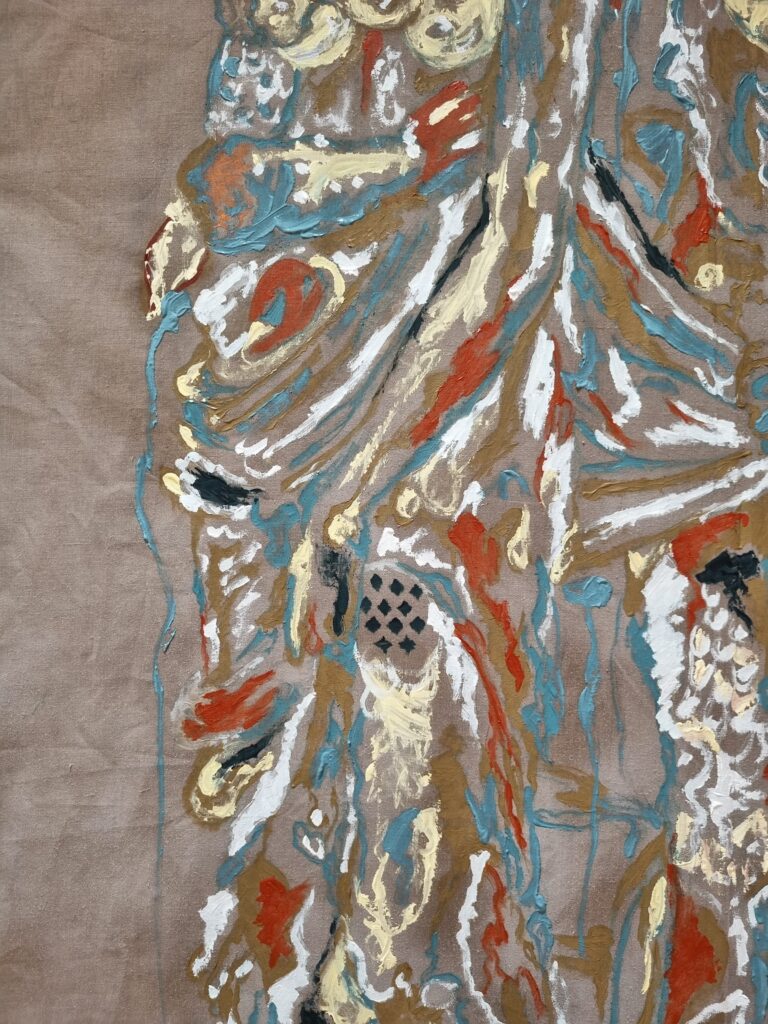
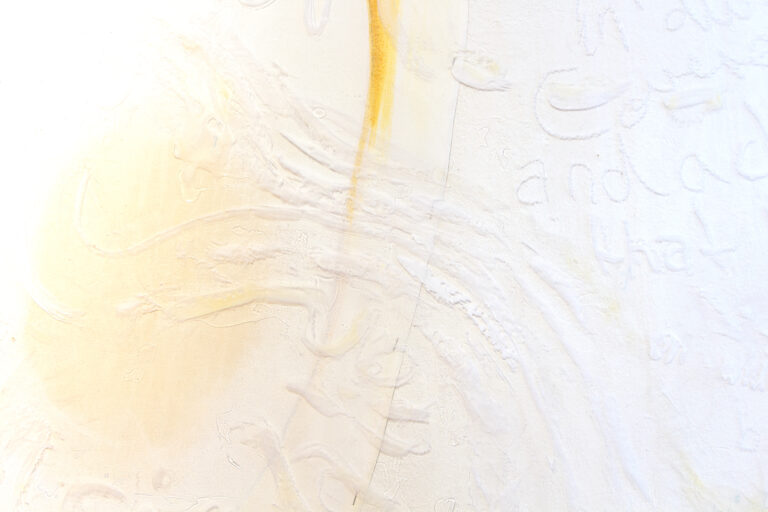
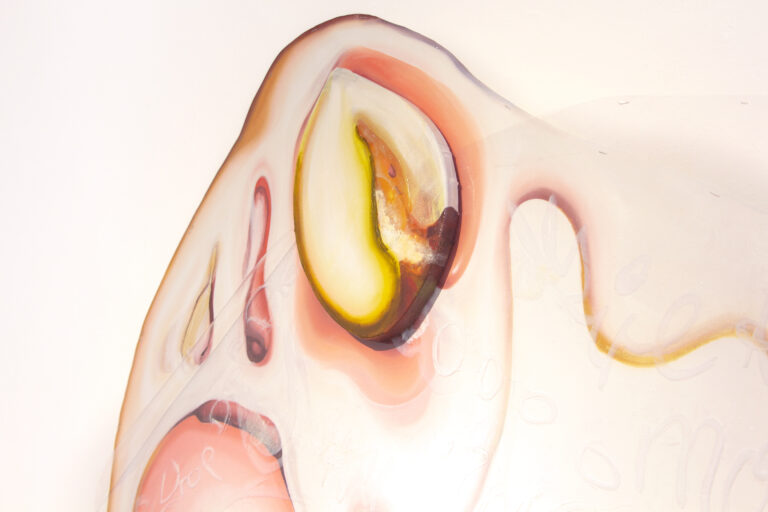
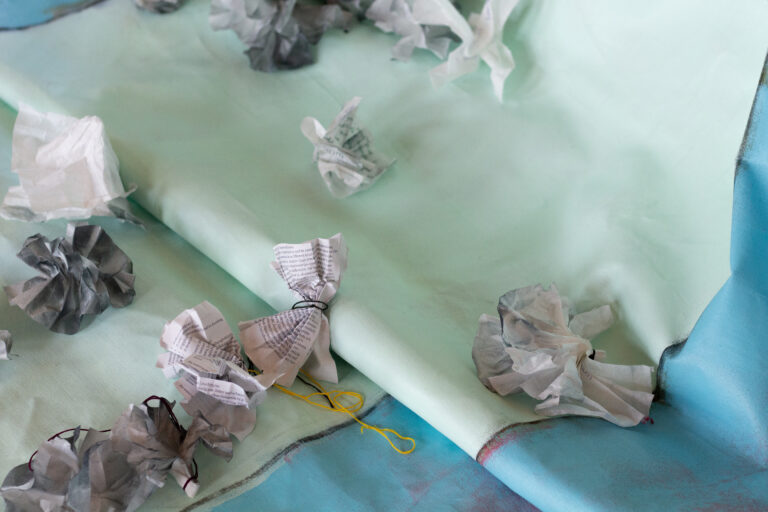
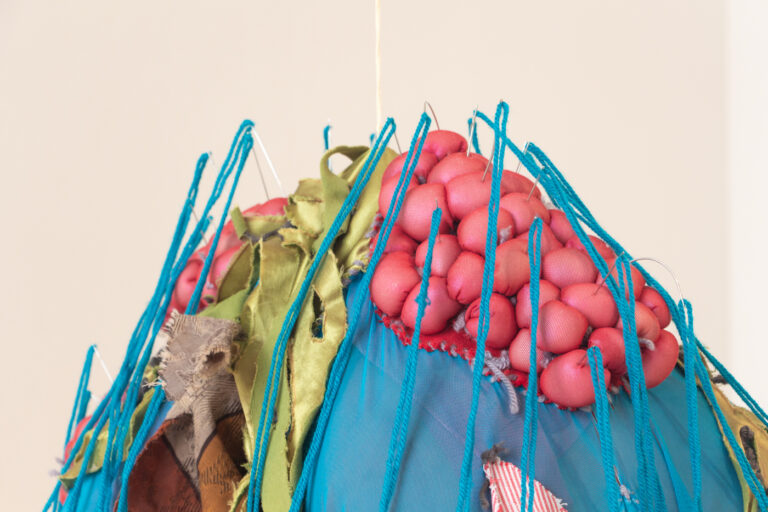
* water
